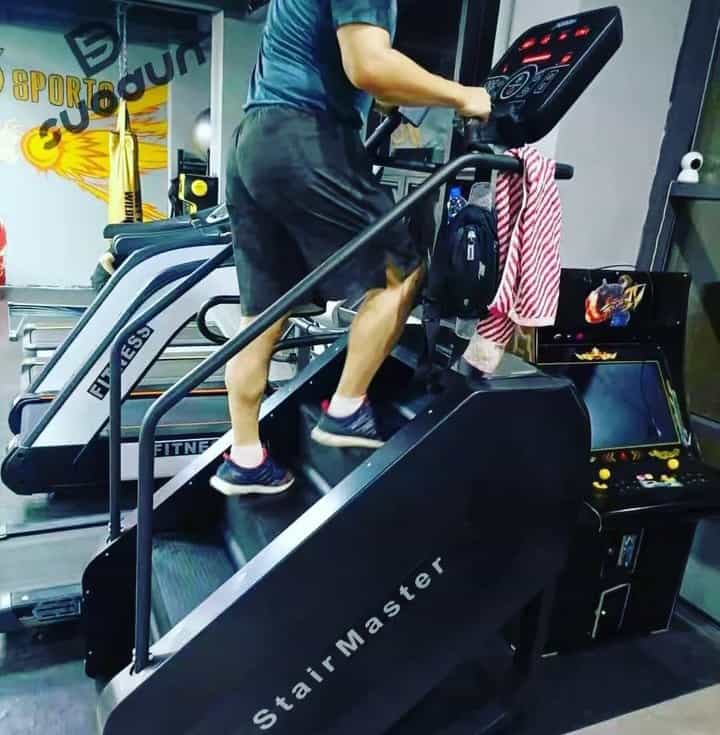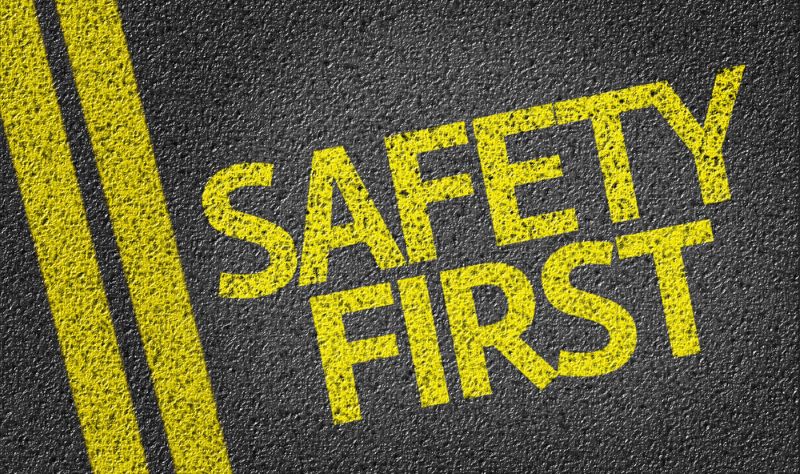The Stairmaster can add some great benefits to your training program.
But one of the biggest challenges you might face is finding the time to fit it into your training week.
So, in this article, I’m going to answer whether you can do Stairmaster after leg day, as well as the pros and cons of doing so.
I also explain the amount of time to leave between finishing your leg session and doing Stairmaster, and whether it might be better to do Stairmaster before your leg workout instead.

Can You Do Stairmaster After Leg Day?
Yes, you can go on the Stairmaster after leg day.
It’ll be harder than usual since your quadriceps, hamstrings, glutes and calves will be fatigued from your leg exercises.
But as long as you have the energy and motivation to do so, there aren’t many reasons why you can’t.
Benefits of Stairmaster After Leg Day
More Fat Loss
When you start training, your body uses its glycogen stores as energy before using fat as fuel.
This is important to remember as you might think that doing 30 minutes of leg exercises results in 30 minutes of fat burning, when actually, this isn’t the case at all.
Until you have burned through your glycogen stores, you’ll unlikely burn a lot of fat.
When doing leg day, you’ll burn through your stored glycogen. This means that when you go onto the Stairmaster machine, you’ll start burning fat for fuel much quicker.
Even burning a little bit of fat each session can end up making a big difference to how much progress you make toward your fitness goals.
More Benefits From Your Gym Session
As time restraints play a big role in your ability to train as often as possible, getting the most out of every gym session can make a huge difference to achieving your fitness goals.
While a well planned and effective leg day will bring you both short and long term benefits, doing Stairmaster after your leg workout can give you even more positive outcomes.
Increased aerobic endurance, increased cardio health, more endorphins being released, and increased calorie burning are just some of the benefits you can extend by doing Stairmaster after your leg session.
You can get more benefits from your gym session without having to increase the number of times you go to the gym each week.
Reduced DOMS (Delayed Onset Muscle Soreness)
DOMS is the phenomenon of muscle soreness experienced in the following days after resistance training.
In my experience, lower body DOMS are the worst, so finding anything that can reduce leg day DOMS is a bonus that you should take advantage of.
Research shows that low-moderate intensity exercise that increases blood flow to your muscles is effective at reducing DOMS, and this is something Stairmaster can help with.
Drawbacks of Stairmaster After Leg Day
It Takes More Time
Your leg workout could be up to an hour in length on its own.
If you then want to do Stairmaster at the end of it, you’ll likely have to increase the amount of time you spend in the gym by at least half an hour.
While this might not be too much of an issue for some gym-goers, for others, they may already have limited time to spend in the gym due to other commitments.
If you’re working to a strict time frame, doing Stairmaster after your leg workout may not be the best idea and it might not even be possible for you.
Higher Risk of Overtraining
After a heavy leg day, you’ll likely be feeling fatigued.
You would’ve probably lifted some heavy weights and done some big, compound movements like squats and leg press. This can take its toll on your body, and you can be left feeling tired by the end of it.
Trying to work out on the Stairmaster after a tiring leg session can be a real challenge if you’re already feeling fatigued.
Imagine being in the gym for 45-60 minutes and working your legs to a high intensity only to still have at least 30 minutes of Stairmaster left to do afterward.
Not only can this have a negative impact on your overall performance, but it can severely dampen your motivation levels too.
These are both signs of overtraining and should be avoided where possible.
Higher Risk Of Injury
According to research, the body looks for more efficient ways to do exercise once your muscles become fatigued.
This means that once your legs become tired, your technique is likely to suffer as your legs aren’t fully capable of completing the exercise.
Since Stairmaster requires your legs to do most of the work, other areas of your body may become more involved than they should which could increase the risk of injury.
(I.e. you may end up doing the Stairmaster in an unnatural position, which could put more stress on your spine and other bones and joints.)
Should You Do Stairmaster Before Or After Leg Workout?
The most important thing to consider is that you should focus on areas you want to improve the most first, and then work on other areas.
So, if your priority is to build and strengthen your quads and hamstrings, then you should focus on leg-based resistance training before doing Stairmaster.
Give it your all in your leg workout, then if (and only if) you have energy left for the Stairmaster then feel free to do so.
(Rather than saving up energy for it.)
Whereas if your goal is to improve your cardiovascular fitness, then you should do Stairmaster first followed by a light leg workout at the end.
Also, keep in mind that you might not be able to lift as heavy if your legs are pre-fatigued from doing the Stairmaster.
The last thing you need is to try a heavy squat and end up injuring yourself as your legs don’t have the strength to do the exercise safely.
How Long After Your Leg Session Should You Begin Stairmaster?
This will ultimately depend on the amount of time you have available to spend in the gym and how fatigued you are after your leg session.
Some people find going straight onto the Stairmaster machine after their leg workout works well for them while others take a short break of up to 15 minutes before starting on the Stairmaster.
Finding what works best for you will help you get the most out of your leg workouts and your Stairmaster activity too.
Is It Safe To Do Stairmaster After Leg Day?

It’s safe to do Stairmaster after leg day given that you’re free from injury and you have the appropriate fitness levels to do so.
You should keep your Stairmaster sessions short to start with before gradually extending them as you move closer toward your fitness goals.
How Long Should You Go On Stairmaster After Training Legs?
Effective Stairmaster sessions could be as short as 10 minutes or they could be as long as an hour or more.
If you’re doing Stairmaster after your leg workout, it’ll probably be best to keep it somewhere between 10-30 minutes in length.
(A 30-minute Stairmaster workout is great for fat loss!)
This will give you the best chance of maintaining your motivation levels and it will reduce how much additional time gets added onto your gym session.
Conclusion: Is Stairmaster Good For Leg Day?
In summary:
- You can do Stairmaster after leg day and it can provide many benefits like increased fat loss and reduce muscle soreness.
- If you want to maximize leg development, you should always do Stairmaster after your leg session, rather than before.
- Depending on the intensity of your leg session, you may struggle to find the motivation to use the Stairmaster after training.
That’s all for this article, but why do you get a sore lower back from leg press? Or perhaps you’re interested in the Stairmaster vs Stepmill?
Hope this helped!
Sources
https://pubmed.ncbi.nlm.nih.gov/22739325/
https://www.healthline.com/health/exercise-fitness/stairmaster-benefits
https://greatist.com/fitness/stairmaster-benefits/
I’ve been in the fitness and strength training industry for nearly a decade. In that time, I’ve gained 30 pounds of muscle, written hundreds of articles, and reviewed dozens of fitness supplements. As for my educational background, I’m a currently studying for my Active IQ Level 3 Diploma in Personal Training.

